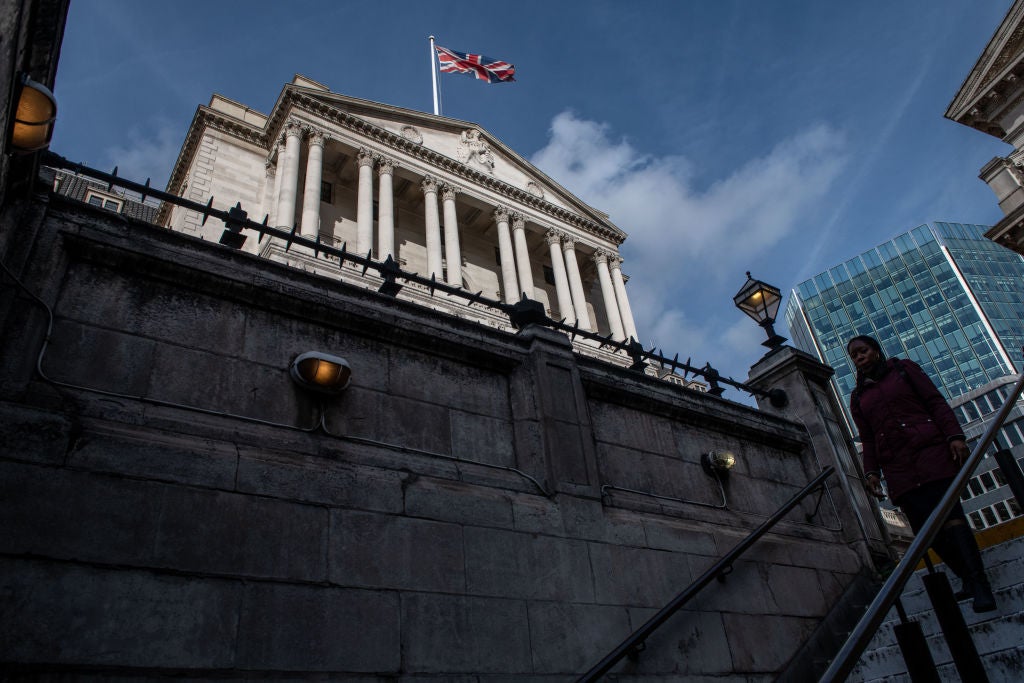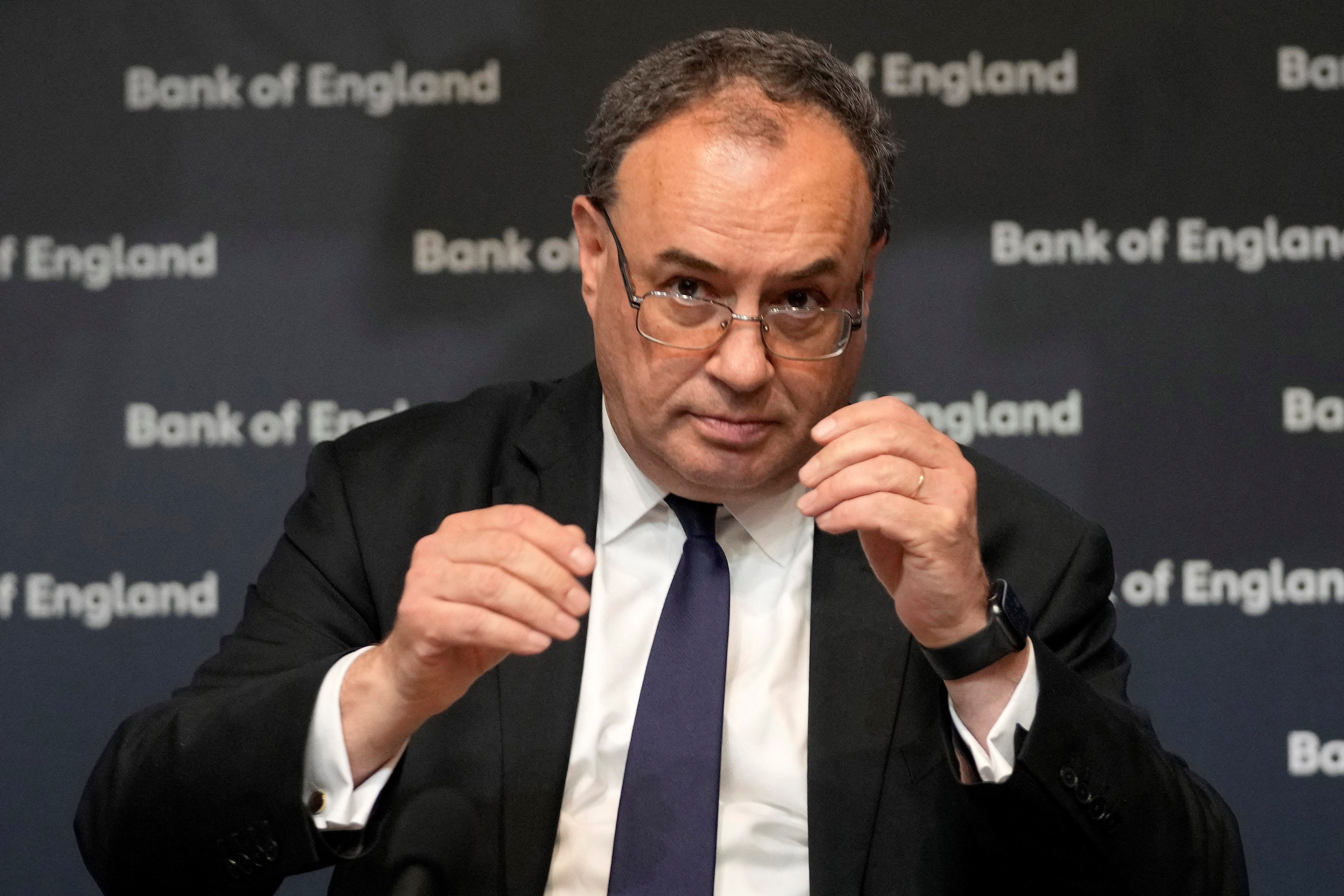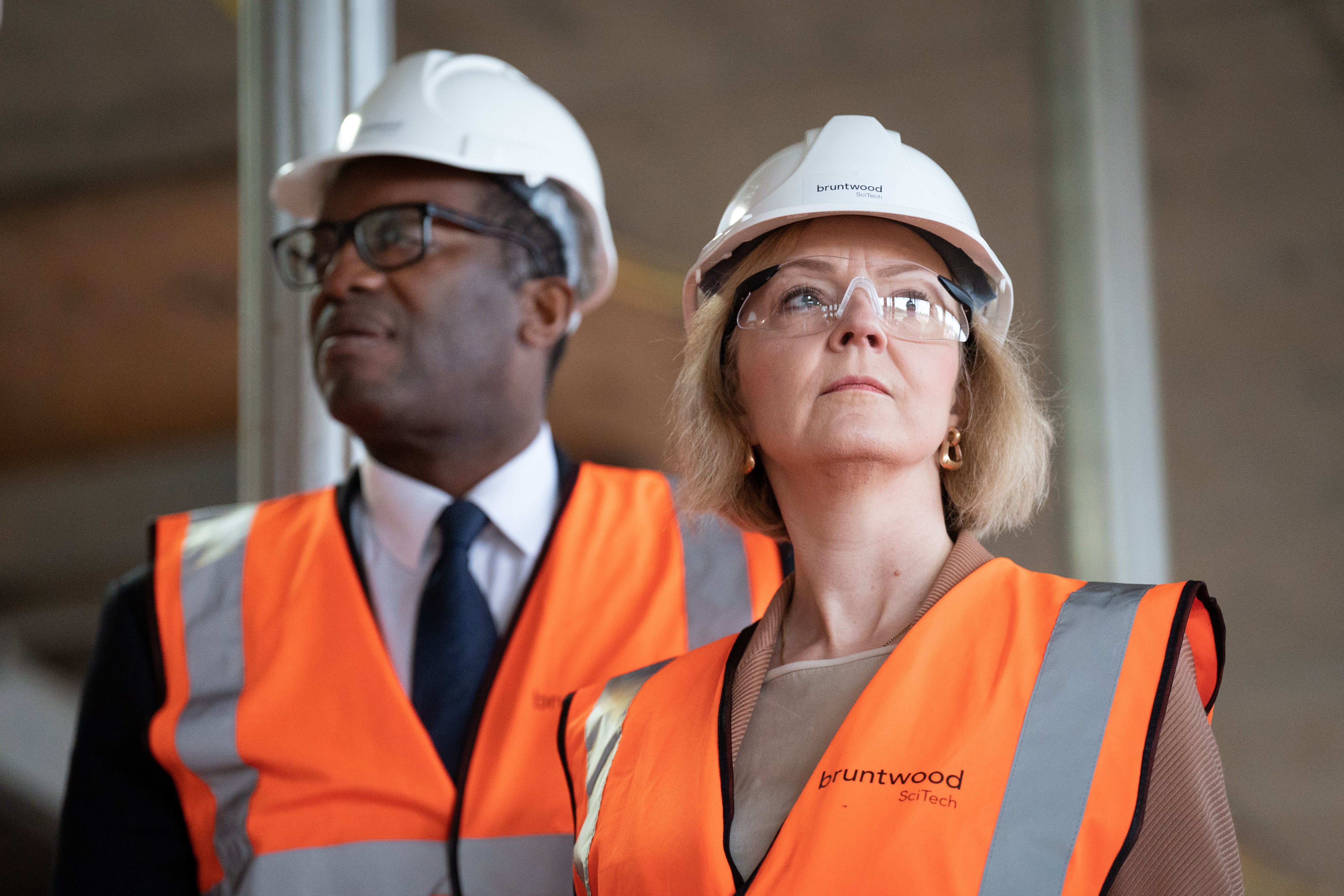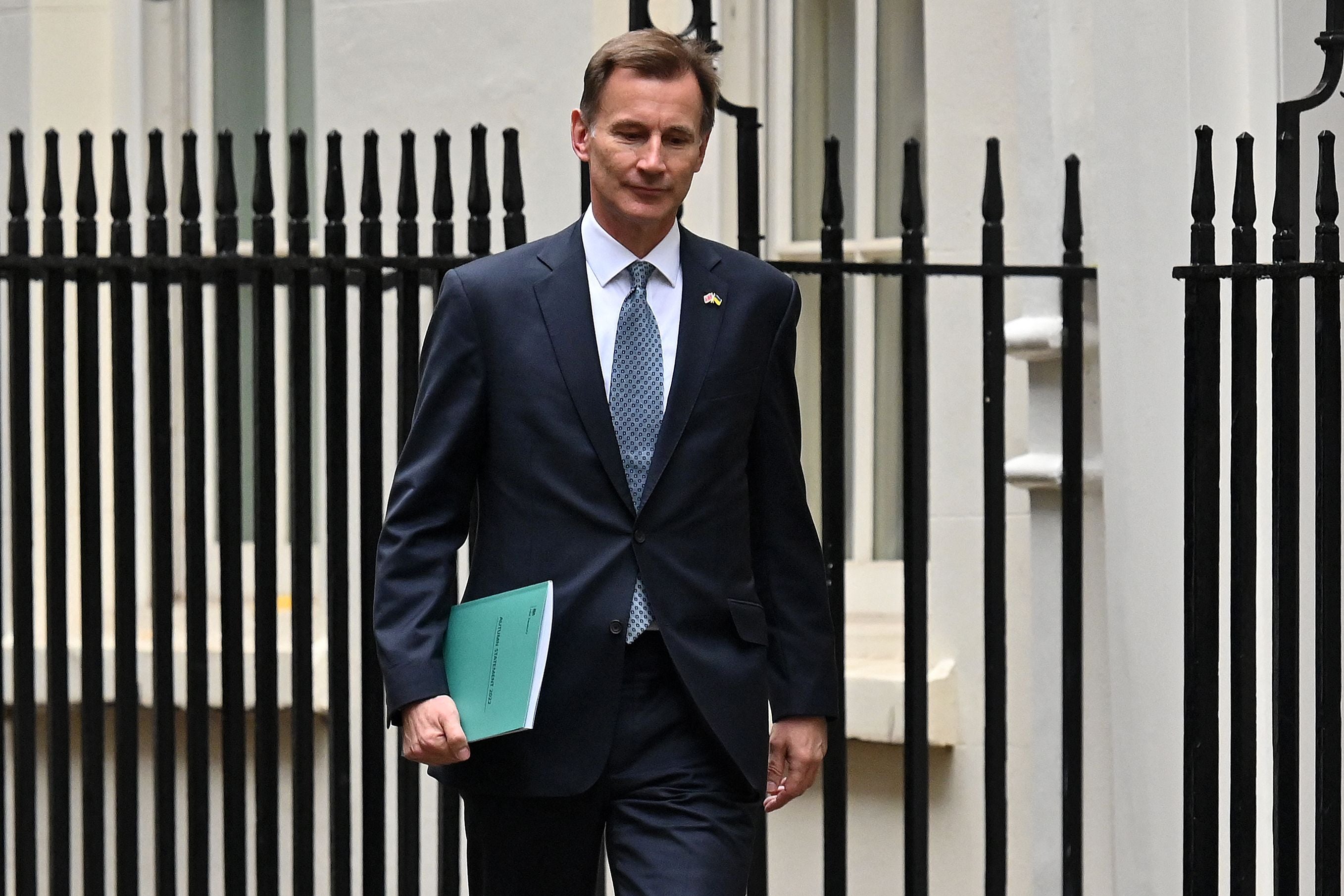Is there any hope for the economy in 2023?
The next year will still be rough and the green shoots of possible recovery still have to fight their way through the snow. But they are there to be found, writes James Moore


As we reach the end of 2022, one of the questions many will have is: what are our financial prospects in the new year?
Having spent a year swimming through a swamp of gloomy economic numbers, it’s time to look on the bright side. So I’m going to try and set out the positive case here. A few reasons to be, if not cheerful, then at least less gloomy.
So let’s see if we can find a crocus or two in the economic snow. True, this is no easy exercise. A brief review of the last year will show why.
There were plenty of dour-looking missives available from think tanks, banks and anyone else, even before Liz Truss and Kwasi Kwarteng sent the economy into a truly frightening tailspin, the after-effects of which are still lingering.
This Reaganite rush of blood to the head – £40bn worth of unfunded tax cuts aimed at the wealthy on top of the huge increase in borrowing required to power the government’s energy support scheme – led to the implosion of the Truss premiership just a few days after Kwarteng was sacked.
Jeremy Hunt was brought in to pick up the pieces and was kept on by Rishi Sunak, who took up residence in Number 10 with Truss having barely had enough time to deal with Boris Johnson’s tasteless and expensive wallpaper.
Sunak and Hunt managed to calm the financial markets. This quickly reduced the cost of borrowing to the government, which under Truss has spiralled out of control – pension funds had been taken to the brink of collapse and mortgage rates reached for the stars.
The latter have come back down a bit too, although base interest rates continue to rise which will push them back up again.
On the other hand, the new Tory team has hardly set the world alight. They could be filed under “a bit less awful than what went before”. At least before Hunt unveiled his crazy plans to tear up much of the regulatory scaffolding put in place to make the City safer in the wake of the financial crisis of 2008.
Sunak and his sorry cabinet have also sat on their hands as workers, justifiably angry over the cost of living crisis, have gone on strike in numbers not seen since the 1970s, with Sunak promising repressive anti-union laws. And don’t even get me started on the pig’s ear of Brexit.
As for those interest rates? We’ve had nine consecutive rises in an attempt to deal with inflation.
There may be a ‘goldilocks zone’ in which buyers who manage to complete transactions will benefit from both lower prices and competitive fixed-rate mortgage deals
But enough of last year. I promised optimism for the new year and I shall deliver it.
Let’s start with inflation, which fell from a high of 11.1 per cent to 10.7 per cent in November, more than the City had expected and enough for some to call it the peak.
The year ended badly for borrowers, with the Bank of England hiking rates by another half a percentage point to 3.5 per cent, a 14-year high. But, optimism! The Bank’s Monetary Policy Committee has been guiding down the City’s expectations of what the peak for interest rates will be. This has worked. The latest Reuters poll put the consensus at 4.25 per cent. So there may be only one or two more rises to come.
The outlook for borrowers in the second half of 2023 looks much more cheerful. Philip Shaw, the chief economist with Investec, explains: “It will be a difficult year for sure, but once central banks are convinced that inflation pressures have receded, they will be able to cut interest rates and get a recovery going in 2023.
“We expect the Bank of England and the [US] Fed to bring rates down gently during the second half of next year. I don't think it’ll be bad enough to have to hide under the bed, but there will have to be a certain degree of teeth gritting.”
In the meantime, the housing market is in the process of executing some form of swan dive. Halifax’s house price index in November recorded a 2.3 per cent fall, its steepest since 2008 when (you guessed it) the UK was being buffeted by the financial crisis.
Painful for some but a correction was long overdue. Some forecasts have prices falling by 10 per cent by the time this is done, reversing some (but not all) of the rapid gains following the Covid-19 pandemic.

The upshot of this is that there may be a “goldilocks zone” in which buyers who manage to complete transactions will benefit from both lower prices and competitive fixed-rate mortgage deals – as the expectation is for interest rates to begin to trend downwards.
Hitting this zone will be challenging, and the supply of available homes may be constrained. Who wants to sell into a falling market? However, younger first-time buyers, stuck with paying high rents to people of their parents’ and grandparents’ generations, are over-due a break. One can only wish them luck with finding a home that’s “just right” and an affordable mortgage to buy it with.
There doesn’t seem to be much to cheer about in the wider economy. Inflation is still high and Hunt’s tax rises, to plug the fiscal black hole opened up by the gruesome twosome of Kwarteng and Truss, will only add to the pressure of the cost of living crisis facing Britons.
The government’s energy price support will get less generous in the Spring, although that is at least when energy use falls.
Businesses are particularly fearful. A Confederation of British Industry survey found that a significant number think their bills may double. They may have little choice but to pass on the costs to customers, and hospitality bosses have warned that many pubs will simply give up the ghost.
On the other hand, there may be a few reasons to feel a little guarded optimism over the consumer economy.
Simon French, an economist and head of research at stockbroker Panmure Gordon, notes that the savings some people built up during the pandemic largely haven’t been spent yet.
“The stock of savings accrued during this period [the pandemic] remains largely intact,” he wrote in a recent piece. He goes on to say that while some may have issues “employing these assets” but ”they do exist as latent spending power”.

The cost of living crisis has been brutal. The TUC describes it as “the longest and harshest wage squeeze in modern history”, with UK workers earning £88/month less on average in real terms than they did 2008.
A dark cloud indeed. but with one silver lining. Unemployment, at 3.7 per cent, remains very low. While it is true that even people in work are struggling to pay their bills and, while Britain is blighted by too many jobs that are poorly paid and insecure, that struggle is inevitably very much harder for those without jobs.
The Bank is prepared for unemployment to rise by quite a bit as it works to bring inflation down, from the near-11 per cent now to 5.9 per cent by this time next year. The latest labour market survey from the Office for National Statistics (ONS) has shown the first signs of a turn for the worse. The 3.7 rate of unemployment represented a slight increase, while job vacancies during the three months to the end of October were down by 65,000.
In his analysis, however, French of Panmure Gordon found something interesting. He pointed to what he called “the ongoing strength of hiring plans”.
“The challenge tends to be that labour market indicators are a lagging indicator... In economies like the US and UK we are already well beyond that point [of lag] with labour markets still exhibiting impressive resilience.”
Jeremy Hunt has talked of a ‘hard road’ ahead. But Hunt is a sharper politician than his predecessor, one who appears to understand the virtue of under-promising
This is a point picked up by Thomas Pugh, an economist at accountants RSM UK: “We do not expect unemployment to surge, especially in sectors experiencing a skills shortage. The labour market is incredibly tight because of a lack of supply of labour, not because of an excess demand for workers. And, given the recent challenges firms have had in recruiting staff and the relatively short recession, firms will have more of an incentive to hoard labour than in previous periods of economic weakness.”
French’s conclusion is may there be “a... growth surprise lurking for 2023?”.
That would be the cause for celebration.
“The darkest hour is before the dawn, right,” says AJ Bell’s investment director Russ Mould of the picture facing investors. “The best reason for optimism is the prevailing pessimism because it means stocks could be cheap and buying cheap is the best possible way of getting good long-term returns.
“As someone once said (probably Warren Buffett), you can have good news and cheap stocks, just not both at the same time.
“There are plenty of UK stocks that look cheap, on an earnings, or asset value or yield basis and have decent balance sheets. You will have to be patient and wait for the catalyst but the gloomier people get, the easier it is to surprise on the upside, and if valuations are cheap that is a potentially beguiling combination.”

Of course, the cost of living crisis inevitably cuts the number of people with the capacity to invest and thus to benefit from this.
Things will get a whole lot easier for everyone if those economists who called October’s 11.1 per cent inflation rate the peak of what we can expect are proved right. Here's hoping the pressure on prices continues to ease and the rate of increase continues to fall as it did in November.
Like Shaw, the Bank of England also expects price rises to start falling quite quickly next year as the energy price shock washes through the system. Inflation will still be relatively high this time next year but the 5.9 per cent rate it expects still looks positively rosy by comparison to what it is today. If inflation were to come down more quickly still things would take on a rosier caste.
Jeremy Hunt has talked of a “hard road” ahead. But Hunt is a sharper politician than his predecessor, one who appears to understand the virtue of under-promising. It should also be noted that the forecasters at the Office for Budgetary Responsibility (OBR), whom Hunt brought in from the cold, have a more cheerful view of things than the Bank.
The OBR has generally sat on the sunnier side of the fence. But perhaps this time it will be proved right?
The next year will still be rough and the green shoots of possible recovery still have to fight their way through the snow. But they are there to be found.




Join our commenting forum
Join thought-provoking conversations, follow other Independent readers and see their replies
Comments